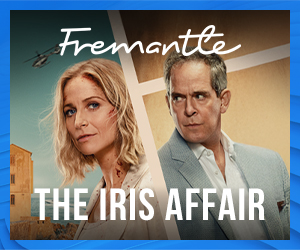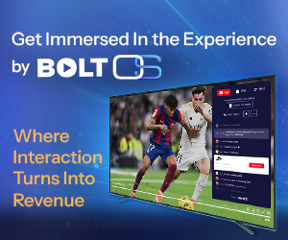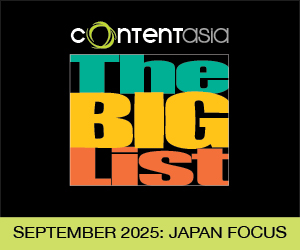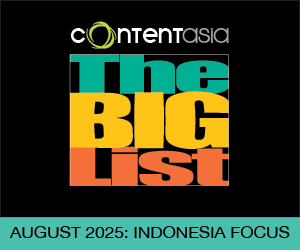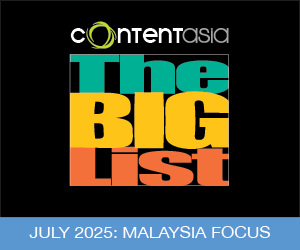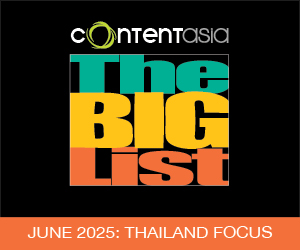
WarnerMedia enters 2021 in dramatically different shape in Asia. Clement Schwebig, head of India, Southeast Asia and Korea, talks about the new structure and what it all means.
When Wonder Woman 1984 hits theatres in Asia in the run up to Christmas, Clement Schwebig, WarnerMedia’s new head of India, Southeast Asia and Korea, gets to display the power of the newly integrated business for the first time. The US$200-million film releases theatrically across his markets from 17 December (Singapore) to early January (Philippines). Unlike the U.S., where WarnerMedia is going with a hybrid day-and-date theatrical/streaming release, the movie will stream/air on other platforms in Asia later; release dates have not been confirmed.
Only on the very surface does that look a whole lot different from the old days in Asia...
A week into his role as head of the fully integrated, end-to-end Turner/HBO/Warner Bros business, Schwebig tells ContentAsia that the reorganisation “crucially allows us to operate at scale and to optimise investments in content and relationships in a way we previously could not”.
The advantages are many, he adds, topped by the ability to manage and determine the entire content and consumer experience “journey”.
“What that means, in the case of an upcoming blockbuster like Wonder Woman 1984, is that we have full control over how best to optimise the windowing and monetisation of the whole franchise in the region. From its debut in theatres through to PVOD, home entertainment, streaming, premium and basic pay-TV, premium cable and, ultimately, free-to-air broadcast,” he says.
WarnerMedia’s new windowing strategy “is our single biggest opportunity now that we have full control of the content journey,” he adds.
“Despite the setbacks in this pandemic year and the on-going uncertainties brought about different countries in different stages of lockdown, theatrical remains a significant and core business for us. Equally, our streamer HBO Go is not fully distributed across every territory in the region, so we need to adopt a case-by-case, country-by-country approach.”
Another advantage of the integration is the ability to have a single conversation with partners, from linear to licensing.
And then there are the efficiencies which he says will allow reallocation of resources to where they ar...
WarnerMedia enters 2021 in dramatically different shape in Asia. Clement Schwebig, head of India, Southeast Asia and Korea, talks about the new structure and what it all means.
When Wonder Woman 1984 hits theatres in Asia in the run up to Christmas, Clement Schwebig, WarnerMedia’s new head of India, Southeast Asia and Korea, gets to display the power of the newly integrated business for the first time. The US$200-million film releases theatrically across his markets from 17 December (Singapore) to early January (Philippines). Unlike the U.S., where WarnerMedia is going with a hybrid day-and-date theatrical/streaming release, the movie will stream/air on other platforms in Asia later; release dates have not been confirmed.
Only on the very surface does that look a whole lot different from the old days in Asia...
A week into his role as head of the fully integrated, end-to-end Turner/HBO/Warner Bros business, Schwebig tells ContentAsia that the reorganisation “crucially allows us to operate at scale and to optimise investments in content and relationships in a way we previously could not”.
The advantages are many, he adds, topped by the ability to manage and determine the entire content and consumer experience “journey”.
“What that means, in the case of an upcoming blockbuster like Wonder Woman 1984, is that we have full control over how best to optimise the windowing and monetisation of the whole franchise in the region. From its debut in theatres through to PVOD, home entertainment, streaming, premium and basic pay-TV, premium cable and, ultimately, free-to-air broadcast,” he says.
WarnerMedia’s new windowing strategy “is our single biggest opportunity now that we have full control of the content journey,” he adds.
“Despite the setbacks in this pandemic year and the on-going uncertainties brought about different countries in different stages of lockdown, theatrical remains a significant and core business for us. Equally, our streamer HBO Go is not fully distributed across every territory in the region, so we need to adopt a case-by-case, country-by-country approach.”
Another advantage of the integration is the ability to have a single conversation with partners, from linear to licensing.
And then there are the efficiencies which he says will allow reallocation of resources to where they are most required – “in creating more content”.
The reorganisation aligns the company in Asia with WarnerMedia CEO Jason Kilar’s priority to ‘going global’. The vision is for a large majority of global revenues to originate from the business outside of the U.S. “To achieve that, Asia will definitely have to play a big part of that growth and it is the reason why this region is so important,” Schwebig says.
While the Asia integration will mirror the WarnerMedia International structure, Schwebig says “every region is also a little different – it’s definitely not a one-size or one-strategy-fits-all approach”.
“For India, Southeast Asia and Korea we have chosen to divide the whole region into a matrix of ‘lines of business’ and ‘operational functions’ that support all our businesses,” he says.
Unique to Asia is combining advertising sales with licensing and merchandising. The blended team “can now provide turn-key solutions to our partners for integrated campaigns and multi-dimensional events”.
Asia will also retain HBO Go as its streaming brand – for now. Schwebig says there is no timetable for the transformation of HBO Go into HBO Max.
“While it’s too early to commit to dates in Asia, it is very clear that the launch of HBO Max internationally is a key priority, including over here in Asia. In the interim, we are committed to HBO Go as WarnerMedia’s flagship streaming service in our region while concurrently planning for the future launch of HBO Max,” he says, adding: “As you can imagine, this will take some time.”.
Asked about the platform’s potential in Asia against global streamers, which have made an aggressive play for local rights, particularly in Korea, Thailand and Indonesia, Schwebig says: “We firmly believe we have a right to play and a right to win in the streaming space”.
“In terms of content, HBO Go has a formidable proposition. It is the streaming home of the entire HBO original programming, multi-Emmy Award winning library and new HBO Max Originals, all of which are day and date with the U.S.,” he says.
“We also have more post-theatrical, first-window Hollywood movies than any other streamer in the region, the importance of which should not be underestimated given how premium blockbusters in Asia remain a major draw and driver for viewership,” he adds.
He also points out that HBO Go is “home to more Asian series and movies than ever”, listing eight HBO Asia originals launched this year – including Invisible Stories in Singapore, Workers in Taiwan and new Taiwanese series Adventure of the Ring, which premieres on 13 December – in addition to Korean and Chinese series and movie acquisitions.
“We have established ourselves as a major storyteller in the region,” he says.
“Kids and family content is a huge factor in subscriber retention for any streamer, and HBO Go doubled its volume in this genre during 2020 – and we hope to double it again in 2021. We will soon have more than 1,000 hours,” he says. WarnerMedia’s kids’ brands across the Asia Pacific, including India, Southeast Asia and Korea, are overseen by Leslie Lee, based in Singapore.
In 2020, HBO Go’s subscriber base more than doubled, “and we want to carry that momentum into 2021,” Schwebig says. The app is available through partner platforms in eight Southeast Asian territories as well as direct to consumer. It goes without saying that he’s aiming to increase that footprint.
The reorg is part of his plan to get there. “It’s vitally important for our whole company to get behind the push to grow our OTT streaming service,” he says, adding: “We will need to think and act differently, and our reorganisation is an important part of that”.
HBO Go’s current multi-pronged distribution strategy, which Schwebig says is “working well for us”, will continue. The three main distribution models are free access for premium subscribers of the HBO package on pay-TV platforms; packaging or bundling the streaming app with the data or video packages of distribution partners – either a mobile or broadband data package or a top tier of video services; or allowing third-party distributors to sell HBO Go as a standalone product.
Linear channels remain a core business globally, including Asia, where the channels are distributed in more than 100 million pay-TV households. “They contribute a significant portion of our revenue, and build an awareness for our franchise that is very complementary to our theatrical and streaming business,” Schwebig says.
He mentions strong linear brands with a “long, storied history... What that means is that when Cartoon Network, HBO and CNN post leadership ratings over many years, it provides a halo effect across every platform – on our streamer, consumer products, events and on social media. In effect, the channels are also great branding tools”.
Increasingly, he adds, “pay-TV platforms appreciate that they can offer their subscribers a bundle with both an on-demand streaming service and a linear TV channel. It’s a win-win for consumers”.
Asian originals continue to be a “top priority”, he promises, talking about delivering “authentic local stories” to diverse audiences in the region.
“For entertainment, we’re keen to look at more co-pros that allow us early participation in projects, as well as acquisitions, formats and even non-scripted shows... Certainly, more content designed to appeal to younger demos and more women will be a focus, but there will also be a push to develop more mainstream content that can travel. In return, we provide creators a chance for their content to travel around the world via our platforms, including HBO Max in the U.S.”
“In the kids sphere, we also have ambitious plans to broaden the viewership base to an even younger audience, and will continue to both acquire and produce accordingly,” he says.
The new Asia structure consolidates programming and production under Magdalene Ew as head of entertainment content for India, Southeast Asia and Korea.
Schwebig says the new integrated team “allows for stronger alignment and prioritisation of resources between programming, channel scheduling, acquisition and production for both our linear channels and HBO Go”.
“With data and market experience, we can better analyse, identify gaps and navigate accordingly. With the networks and theatrical colleagues now working on the same team, we can also look at greater collaboration in the production of features.” But first, Wonder Woman 1984.
Published in ContentAsia's December 2020 magazine













